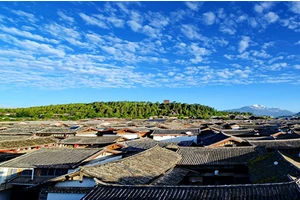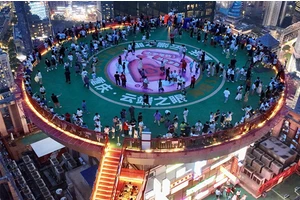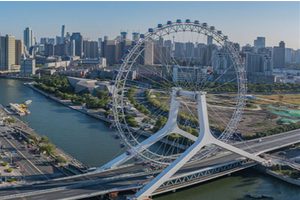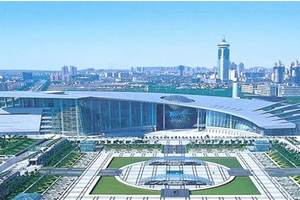Resource tourism strategy
The best routes for free travel in Guangxi: Guilin Landscape, Lijiang Yangshuo, Maolan Huanjiang Mulun Karst, Detian Transnational Waterfall, Weizhou Island Nanwan Crocodile Mountain, Guangxi Beidi Mountain Apo Mountain, Luocheng National Geopark, Jianjiang 700 Lane, etc.
1. Guilin Landscape Lijiang Yangshuo
"Guilin landscape" is a general term for Guilin's tourism resources, which refers to a wide range of projects and scenic spots. As one of the top ten scenic spots in China, the typical karst terrain constitutes a unique landscape of Guilin, which has enjoyed the reputation of "Guilin's landscape is the best in the world" for thousands of years.
Lijiang River is the essence of Guilin's natural landscape, which is unique and beautiful in the world. It is rich in natural landscape. The main attractions are summarized as one river (Lijiang River), two caves (reed flute cave, Qixingyan) and three mountains (Duxiufeng, Fubo Mountain and Diecai Mountain).
2. Maolan Huanjiangmu on Karst
Mulun Nature Reserve is connected with Guizhou Maolan National Nature Reserve, which is a large and well-preserved karst forest ecosystem in the same latitude area of the world and an important area for studying karst and its forests. Mulun Nature Reserve belongs to karst landform, which is the largest surviving contiguous area, the best intact preservation and the most primitive karst forest in the world.
Among them, the Mulun karst eco-tourism scenic spot around the river includes karst natural landscape, mysterious Maonan customs, canyon rafting exploration, historical sites search, forest recreation and holiday and other experiences.
3. Detian Transnational Waterfall
Detian International Waterfall is the first in Asia and the fourth largest in the world, with an average annual water flow of about three times that of Huangguoshu Waterfall in Guizhou. The scenic spot takes Guichunjie River as the axis, and the natural landscape is composed of Detian Waterfall, Green Island Clouds and Dayang Valley. The waterfalls are magnificent, layered, and the water is stirring and heard for miles.
The scenic spot combines waterfalls, mountains, rivers, vegetation, rural pastoral and other landscapes, and integrates transnational waterfall landscape, colorful border folk customs and a long and magical border history and culture, forming a karst characteristic landscape in the southern frontier with green mountains, beautiful waters, beautiful waterfalls and strong feelings.
4. Weizhou Island Nanwan Crocodile Mountain
Weizhou Island borders Beihai City in Guangxi in the north, Leizhou Peninsula in the east, Xieyang Island in the southeast, Hainan Island across the sea in the south and Vietnam in the west. Scenic spots on the island include Crocodile Mountain Scenic Area, Dishui Danping Scenic Area, Shiluokou Scenic Area, Catholic Church Scenic Area and Rainbow Beach Scenic Area.
Among them, Crocodile Mountain Scenic Area is the core of Weizhou Island tourism, mainly including Crocodile Mountain, Rainbow Beach and some sea areas; Volcano geological museum shows Weizhou Island's special geological, geomorphological and environmental features to tourists, islanders, teachers and students through pictures, specimen display, video playback and distribution of materials.
5. Beidi Mountain Apo Mountain in Guangxi
Beidi Mountain Tourist Area, with beautiful scenery and pleasant scenery, is famous for its "six wonders" of beautiful peaks, lush forests, strange rocks, beautiful flowers, clear springs and misty immortals. The strangeness, beauty and heroism coexist, and it is quiet, quiet and gorgeous, so it is known as "Little Zhangjiajie".
Relying on the original ecological landscape environment and folk culture, the tourist area fully displays the characteristic tourism resources of "Wonderland Landscape and Blessing Holy Land", and makes the tourist area a multi-functional tourist attraction such as blessing sightseeing, folk culture experience, leisure and health vacation, mountain sports and so on. The surrounding Apo Mountain has preserved a large area of secondary South Asian tropical rain forest and monsoon evergreen broad-leaved forest, with pleasant environment and beautiful scenery.
6. Luocheng National Geopark Jianjiang 700 Lane
Guangxi Luocheng National Geopark, which is mainly composed of karst geological and geomorphological relics and water landscape relics, consists of Jianjiang and Wuyang.
The river in the park is crystal clear all year round; The mountains on both sides of the strait are like swords, and the forest is colorful; Karst caves are large in scale, with stalagmites and curtains of stone and curtain. From peaks and forests to solitary peaks and residual hills, from eroded mountains to eroded valleys and basins, and then to karst plains, the evolution process of karst development is fully demonstrated, and it is one of the best areas for the simultaneous development of tower-shaped and cone-shaped karst in South China. In addition, the surrounding Qibainong National Geopark enjoys the reputation of "the new pearl of western Guangxi scenery" and is also one of the famous scenic spots in Guangxi.
Reference to the above content: Baidu Encyclopedia-Weizhou Island
Baidu Encyclopedia-Detian Transnational Waterfall
Singapore-Malaysia travel guide
I. Overview
Singapore and Malaysia are ideal destinations for many travel enthusiasts. The two countries have unique culture, delicious food, natural scenery and rich tourism resources. This guide will provide you with basic suggestions and route planning for Singapore-Malaysia tourism.
Second, the Singapore part
1. Famous scenic spots:
Singapore's landmark attractions, such as marina bay Sands, Merlion Park and Sentosa Scenic World, are not to be missed. Besides, museums and gardens in Singapore are also good places to experience the charm of the city.
2. Food experience:
Singapore is the capital of cuisine, which brings together cuisines from all over the world. Visitors can taste Singapore's special Nyonya cakes, Hainan chicken rice, bak Kut teh and so on.
Third, the Malaysian part
1. Kuala Lumpur City Tour:
As the capital of Malaysia, Kuala Lumpur has unique modern architecture and traditional customs. Visitors can visit the National Mosque, Independence Square and other scenic spots.
2. Penang Cultural Tour:
Penang is the cultural center of Malaysia, with modern buildings, ancient temples and street art. Visitors can experience the multi-culture of Penang.
3. Tropical beach vacation:
Kota Kinabalu and Mabo Island in Malaysia are famous beach resorts, where tourists can enjoy the sunshine, beaches and seawater.
Fourth, travel advice
1. Preparation before departure: It is recommended to check the weather forecast in advance and bring rain gear and sun protection products. At the same time, prepare the necessary conversion plugs, travel insurance, etc.
2. Transportation: The public transportation systems in Singapore and Malaysia are relatively developed, so tourists are advised to use public transportation as much as possible.
3. Currency and shopping: Singapore uses Singapore dollar and Malaysia uses Malaysian ringgit. Both countries have rich shopping places, such as Orchard Road Shopping Street in Singapore and shopping centers in Malaysia.
4. Precautions: Respect local culture and customs, especially in religious places. At the same time, pay attention to the safety of personal property and avoid going to undeveloped or unsuitable places for tourists.
The above is the basic content of Singapore-Malaysia travel strategy, and I hope it will help your travel. When planning your trip, please make adjustments according to your personal interests and actual situation. Have a nice trip!






